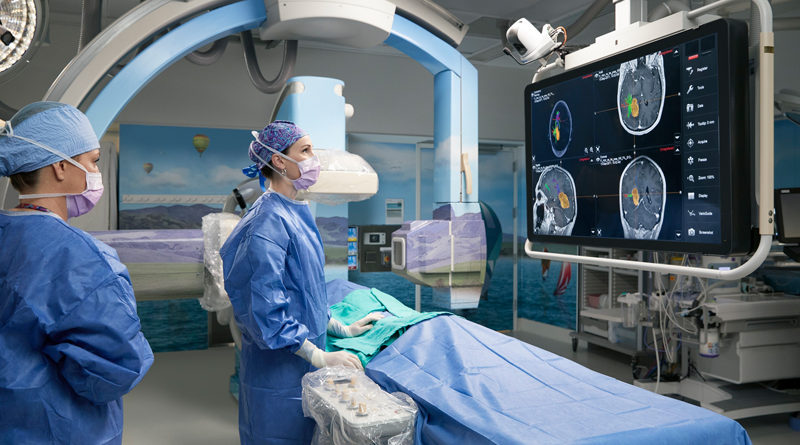New High-Tech Surgery Center Opens at Lucile Packard Children’s Hospital
By Roxanne Squires
STANFORD, Calif. – Lucile Packard Children’s Hospital Stanford has unveiled its new surgical unit, the Bonnie Uytensgu and Family Surgery and Intervention Center, marking another major milestone in the hospital’s expansion since it opened its new Main Building in December 2017.
The expansion consists of six new surgical suites and six interventional treatment rooms as well as radiology and cardiac catheterization labs, designing the availability of advanced surgical, interventional and hybrid technologies anywhere at Packard Children’s Hospital.
Previously, interventional radiology, nuclear medicine and surgical services were located in different parts of the hospital campus while some services were shared with the adult hospital, Stanford Health Care.
Now, a patient can check into the Treatment Center and access multiple services within one area.
The hospital’s existing seven operating rooms (ORs) are currently receiving upgrades while the hospital is scheduled to have a total of 13 cutting-edge pediatric OR’s by early 2019 – the most in any Northern California children’s hospital.
This will nearly double Packard Children’s capacity for pediatric surgical procedures, permitting the hospital to perform a projected 6,000 additional surgeries annually.
The ORs will suspend monitors, lights and other devices from the ceiling, creating more room for the medical team, robots and portable equipment.
The new surgical center also explores sophisticated healthcare tools by incorporating powerful new imaging technologies to the operating suites, interventional radiology rooms, cardiac catheterization labs and hybrid suites. This technology will ultimately enhance real-time navigation as well as enable the immediate evaluation of a procedure’s success, all of which will contribute to improving patient care.
In addition to this, it will also be the first time the children’s hospital will have pediatrics-dedicated cardiac catheterization labs, mitigating invasive diagnostic and treatment methods.
Rebecca Claure, MD, medical director of Perioperative Services at Packard Children’s, explained that the Center’s condensed footprint influences greater collaboration and coordination of procedures, which reduces the number of times patients need to undergo anesthesia while also shortening the length of time patients spend under anesthesia.
The footprint works to bolster acceleration of the hospital’s capability to develop novel treatment and interventions that continuously improve the health of the children the hospital serves.
Packard Children’s is also the first pediatric hospital in the world use the robotic imaging technology suite called BrightMatter® by Synaptive Medical Inc.
Traditionally, a fragmented collection of many data sources and tools have been applied inside the OR, using experts to manually piece together images and data to create a comprehensive view of the surgical field.
This new tool instead places imaging, surgical planning, patient data collection, and intraoperative vision into a fully integrated platform with navigation, robotic automation, digital microscopy and data analytics. Robots are being used in lots of different industries and this example highlights how important robot integrators are becoming. Technology is rapidly advancing and the health sector, in particular, is somehow keeping up with all of the changes.
In a designated cardiothoracic surgery suite, a new interactive virtual imaging platform will allow surgeons to view and manipulate layers of MRI and CT scans in an open 3-D space from inside the OR and without any special eyewear.
Although, this new technology will help staff greatly, the hospital also had to consider how the large machinery and overhead screens can be intimidating for children. In response to this, many of the procedure rooms and machines are draped in calming imagery with depictions of forest and beach environments, helping to mitigate the sense of the sterile rooms.
Furthermore, care teams in the Treatment Center are using a toolkit of immersive technologies aimed at reducing patients’ anxiety.
The Executive Architect included HGA, Perkins + Will as the design architect and DPR Construction as the general contractor.
Reports from Stanford Medicine and PRNewswire contributed to this story.

